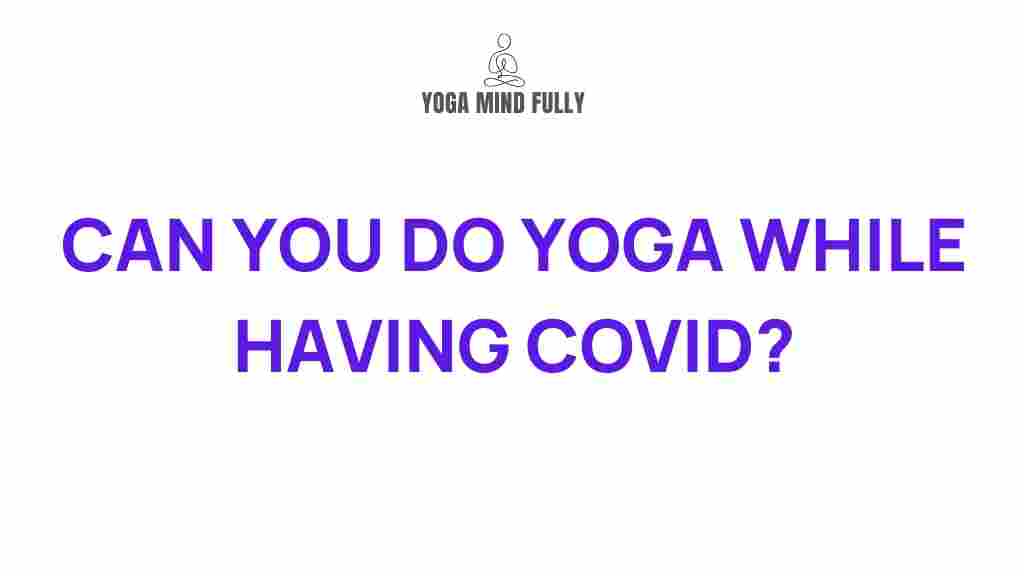The global COVID-19 pandemic brought immense challenges, impacting mental and physical health on unprecedented levels. During these trying times, many turned to yoga as a sanctuary of peace, strength, and resilience. Yoga, with its time-tested practices, offers tools to manage stress, strengthen immunity, and enhance overall well-being. This article delves into the intriguing connection between yoga and COVID-19, exploring how it can serve as a pillar of support in navigating a post-pandemic world.
The Role of Yoga During the COVID-19 Pandemic
When the pandemic confined individuals to their homes, yoga emerged as an effective way to maintain both physical and mental health. Practicing yoga offers benefits such as:
- Boosting immunity to reduce vulnerability to infections.
- Alleviating stress and anxiety caused by uncertainty.
- Enhancing lung capacity and respiratory health.
- Encouraging mindfulness and fostering emotional balance.
As a holistic practice, yoga addresses the intertwined aspects of health and wellness. Let’s examine how specific practices of yoga aid during and after the pandemic.
Strengthening Immunity with Yoga
Strong immunity is crucial in combating illnesses like COVID-19. Certain yoga poses and breathing techniques have been shown to stimulate the lymphatic system, reduce inflammation, and promote better circulation, all of which contribute to improved immunity. Popular immunity-boosting yoga poses include:
- Downward Dog (Adho Mukha Svanasana) – Enhances circulation and reduces fatigue.
- Child’s Pose (Balasana) – Relaxes the body and promotes stress relief.
- Cobra Pose (Bhujangasana) – Opens up the chest and strengthens respiratory function.
In addition to poses, incorporating pranayama or breathing exercises such as *Kapalabhati* (skull-shining breath) and *Anulom Vilom* (alternate nostril breathing) can significantly enhance lung function.
Managing Stress Through Yoga
The uncertainty and isolation of the pandemic exacerbated stress levels globally. Yoga’s emphasis on mindfulness and meditation provides an effective remedy for stress management. Practices like:
- Yoga Nidra – A guided relaxation technique to ease anxiety.
- Sun Salutations (Surya Namaskar) – A sequence of movements to promote energy flow and mental clarity.
- Lotus Pose (Padmasana) with Meditation – Fosters emotional stability and inner peace.
Combining physical movement with mindfulness anchors individuals in the present, reducing the overwhelming nature of external stressors. For more on mindfulness practices, visit our dedicated mindfulness section.
Yoga for Post-COVID Recovery
Many COVID-19 survivors experience prolonged symptoms such as fatigue, breathing difficulties, and stress. Yoga can play a vital role in recovery by:
- Restoring lung capacity through gentle breathing exercises.
- Building strength and flexibility in a gradual manner.
- Reducing brain fog and enhancing focus with meditation.
Engaging in restorative yoga poses like Bridge Pose (Setu Bandhasana) or Reclining Bound Angle Pose (Supta Baddha Konasana) can aid recovery and bring relief.
Step-by-Step Guide to Incorporate Yoga into Your Routine
Incorporating yoga into your daily routine doesn’t have to be daunting. Follow these steps for a seamless start:
- Set Intentions: Define your goals, whether it’s improving health, reducing stress, or enhancing flexibility.
- Create a Space: Dedicate a quiet, clutter-free area for your practice.
- Start Small: Begin with 10-15 minutes daily, gradually increasing as you feel comfortable.
- Follow Guided Videos: Use resources like online yoga tutorials or join virtual yoga classes for guidance.
- Stay Consistent: Make yoga a daily habit to experience its long-term benefits.
Consistency is key. With time, you’ll notice improvements in both your physical health and mental clarity.
Troubleshooting Common Challenges
As with any new habit, challenges are inevitable. Here’s how to tackle common issues when starting yoga:
- Lack of Motivation: Partner with a friend or join a yoga group to stay accountable.
- Difficulty Following Poses: Opt for beginner-friendly classes or modifications.
- Time Constraints: Incorporate yoga into your morning or evening routine to make it more manageable.
Remember, yoga is about progress, not perfection. Celebrate small victories along the way.
Benefits of Practicing Yoga Beyond the Pandemic
While yoga proved to be a lifeline during COVID-19, its benefits extend far beyond the pandemic. Regular practice can lead to:
- Enhanced flexibility, strength, and posture.
- Improved cardiovascular health and digestion.
- Better emotional regulation and focus.
- A greater sense of community and belonging.
Yoga is not just an exercise; it’s a lifestyle that promotes holistic well-being. Explore more about its benefits through external resources like the World Yoga Federation.
Conclusion: Embracing Yoga as a Tool for Wellness
In a world recovering from the impacts of COVID-19, yoga offers a beacon of hope. Its blend of physical postures, breath control, and mindfulness practices equips individuals with the resilience to navigate life’s challenges. By embracing yoga, you not only nurture your body and mind but also foster a deeper connection to yourself and the world around you.
Whether you’re a beginner or a seasoned practitioner, now is the perfect time to harness the transformative power of yoga. Start your journey today and uncover a path to holistic health and peace.
This article is in the category Yoga Practices and created by YogaMindFully Team
